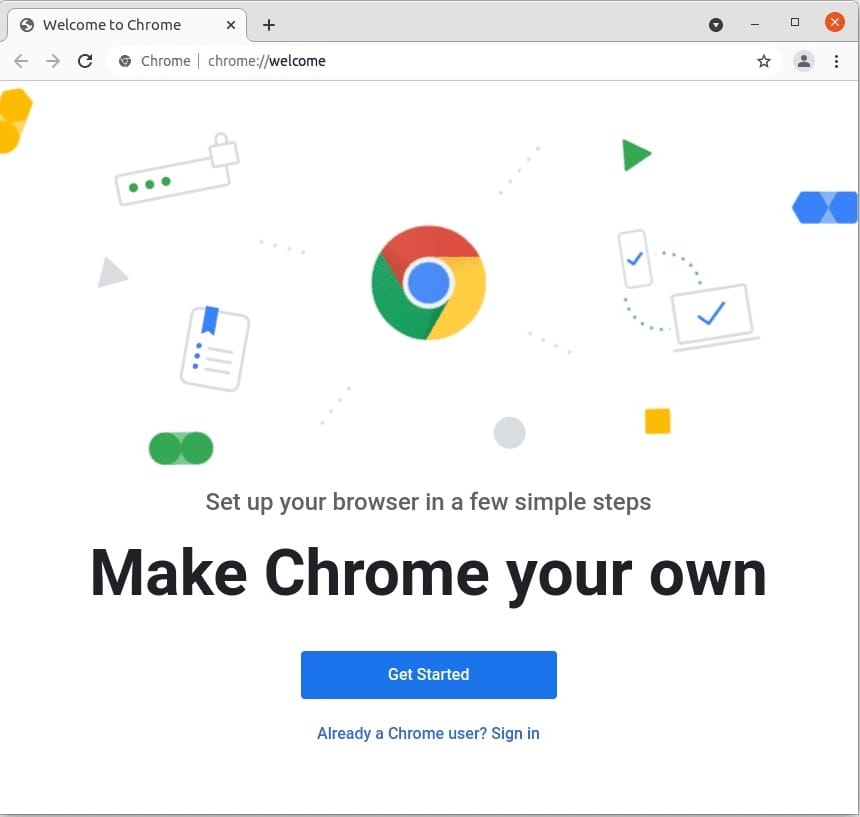How To Install Google Chrome on AlmaLinux 10

AlmaLinux 10 represents the latest evolution in enterprise-grade Linux distributions, maintaining full compatibility with Red Hat Enterprise Linux while providing a free, community-driven alternative. While AlmaLinux 10’s official release is anticipated, administrators and users can prepare for Chrome installation using proven methods from AlmaLinux 8 and 9. Google Chrome remains one of the most popular web browsers for enterprise environments, offering robust security features, seamless integration with Google services, and extensive extension support that makes it indispensable for modern workflows.
This comprehensive guide demonstrates multiple installation methods for Google Chrome on AlmaLinux 10, ensuring you have reliable access to this essential browser regardless of your system configuration or organizational requirements.
Prerequisites and System Requirements
Before installing Google Chrome on your AlmaLinux 10 system, several prerequisites must be met to ensure a smooth installation process.
System Requirements
Your AlmaLinux 10 installation should meet minimum hardware specifications including at least 2GB of RAM, though 4GB is recommended for optimal Chrome performance. The system requires approximately 500MB of free disk space for the browser installation and additional space for user profiles and cache data. A stable internet connection is essential for downloading installation packages and ongoing updates.
User Permissions and Access
Administrative privileges are crucial for Chrome installation. You’ll need either sudo access or root privileges to install system packages and modify repository configurations. Most AlmaLinux installations provide sudo access to the initial user account created during system setup.
Essential System Tools
Ensure your system includes the wget utility for downloading packages, the dnf package manager (standard in AlmaLinux), and terminal access through either SSH or local console. These tools form the foundation for all installation methods described in this guide.
Understanding Chrome vs. Chromium Differences
Enterprise users often face the choice between Google Chrome and Chromium, each serving different organizational needs.
Google Chrome is a proprietary browser developed by Google, featuring automatic updates, integrated Google services, Adobe Flash support, and proprietary codecs for media playback. Chrome includes additional security features and enterprise management capabilities that make it suitable for business environments requiring centralized policy management.
Chromium serves as the open-source foundation for Chrome, offering similar functionality without proprietary components. While Chromium provides excellent performance and security, it lacks some enterprise features and automatic update mechanisms that many organizations require for streamlined management.
For enterprise AlmaLinux deployments, Chrome typically offers superior integration with existing IT infrastructure and simplified maintenance through automatic updates and centralized management tools.
Method 1: Direct RPM Package Installation
The direct RPM installation method provides immediate Chrome access without configuring additional repositories, making it ideal for isolated systems or environments with restricted internet access.
Step 1: Update Your System
Begin by ensuring your AlmaLinux 10 system has the latest security updates and packages installed:
sudo dnf update -y
sudo dnf install epel-release -yThe EPEL (Extra Packages for Enterprise Linux) repository provides additional packages that may be required for Chrome’s dependencies. This step ensures compatibility and security before proceeding with Chrome installation.
Step 2: Download Chrome RPM Package
Navigate to a temporary directory and download the latest Chrome RPM package directly from Google’s servers:
cd /tmp
wget https://dl.google.com/linux/direct/google-chrome-stable_current_x86_64.rpmThis command downloads the 64-bit stable version of Chrome, which is appropriate for most AlmaLinux 10 installations. The package size is approximately 90MB, so download time depends on your internet connection speed.
Step 3: Handle GPG Key Authentication
AlmaLinux 9 and later versions implement stricter cryptographic policies that may conflict with Google’s signing key. Address this by temporarily adjusting crypto policies:
sudo update-crypto-policies --set LEGACY
wget -q -O - https://dl-ssl.google.com/linux/linux_signing_key.pub | sudo gpg --dearmor -o /usr/share/keyrings/google-chrome.gpg
sudo update-crypto-policies --set DEFAULTThese commands temporarily enable legacy cryptographic support, import Google’s GPG key, and restore default security policies. This process ensures package authenticity while maintaining system security standards.
Step 4: Install the Chrome Package
With the GPG key properly configured, install Chrome using the downloaded RPM package:
sudo dnf localinstall google-chrome-stable_current_x86_64.rpm -yThe dnf localinstall command handles dependency resolution automatically, installing any required libraries that Chrome needs for proper operation. The installation process typically completes within 1-2 minutes depending on system performance.
Step 5: Verify Installation Success
Confirm Chrome installation by checking the installed version:
google-chrome --versionA successful installation displays the Chrome version number, typically formatted as “Google Chrome X.X.XXXX.XX”. You can also verify installation through the system’s application menu or by launching Chrome directly from the command line.
Method 2: Repository-Based Installation
Repository-based installation offers superior long-term maintenance by enabling automatic updates through the system’s package management infrastructure.
Adding Google’s Official Repository
Repository installation begins with configuring Google’s official Chrome repository on your AlmaLinux 10 system.
Create the repository configuration file:
sudo tee /etc/yum.repos.d/google-chrome.repo << EOF
[google-chrome]
name=google-chrome
baseurl=http://dl.google.com/linux/chrome/rpm/stable/x86_64
enabled=1
gpgcheck=1
gpgkey=https://dl-ssl.google.com/linux/linux_signing_key.pub
EOFThis configuration establishes a permanent connection to Google’s repository, enabling automatic updates and simplified management. The repository targets the stable release channel, ensuring you receive thoroughly tested Chrome versions.
Installing Chrome Through DNF
With the repository configured, install Chrome using standard package management commands:
sudo dnf update
sudo dnf install google-chrome-stable -yThis method automatically handles dependencies and integrates Chrome updates with your regular system maintenance schedule. The installation process mirrors other system packages, providing consistency with established administrative procedures.
Verifying Repository Integration
Confirm the repository is properly configured by listing active repositories:
sudo dnf repolist | grep google-chromeSuccessful configuration displays the Google Chrome repository in the active repository list, ensuring future updates will be automatically available through standard system update procedures.
Post-Installation Configuration and Setup
After successful Chrome installation, several configuration steps optimize the browser for your AlmaLinux 10 environment.
Initial Launch and Setup Wizard
Launch Chrome for the first time using either the application menu or command line:
google-chromeThe first-run wizard prompts for several configuration options including default browser selection, data usage preferences, and Google account integration. These settings can be modified later through Chrome’s settings interface.

Desktop Environment Integration
Chrome automatically integrates with most desktop environments common in AlmaLinux deployments, including GNOME, KDE, and XFCE. The browser appears in application menus and supports standard desktop features like file associations and notification integration.
For command-line environments or custom desktop configurations, create desktop shortcuts manually:
cat > ~/Desktop/google-chrome.desktop << EOF
[Desktop Entry]
Version=1.0
Name=Google Chrome
Comment=Access the Internet
Exec=/usr/bin/google-chrome-stable %U
Terminal=false
Icon=google-chrome
Type=Application
Categories=Network;WebBrowser;
MimeType=text/html;text/xml;application/xhtml+xml;
EOFEnterprise Policy Configuration
Enterprise environments benefit from Chrome’s extensive policy management capabilities. Create policy directories and configure organizational settings:
sudo mkdir -p /etc/opt/chrome/policies/managed
sudo mkdir -p /etc/opt/chrome/policies/recommendedPolicy files in JSON format control various Chrome behaviors including homepage settings, extension management, and security configurations.
Troubleshooting Common Installation Issues
Chrome installation on AlmaLinux 10 may encounter several common issues with straightforward solutions.
GPG Key Import Failures
SHA1 cryptographic deprecation in newer AlmaLinux versions can cause GPG verification failures. Resolve this by temporarily adjusting crypto policies as described in Method 1, or by manually importing the key with legacy support:
curl -fsSL https://dl-ssl.google.com/linux/linux_signing_key.pub | sudo gpg --dearmor -o /etc/pki/rpm-gpg/google-chrome-key
sudo rpm --import /etc/pki/rpm-gpg/google-chrome-keyThis approach provides a permanent solution for environments requiring strict cryptographic compliance.
Package Dependency Resolution
Missing dependencies typically resolve automatically through dnf, but manual intervention may be necessary for minimal installations:
sudo dnf install liberation-fonts vulkan-loader mesa-libGLThese packages provide font rendering and graphics acceleration support essential for Chrome’s user interface and web content rendering.
Launch and Runtime Problems
Chrome sandbox security features may conflict with certain system configurations. Disable sandboxing temporarily for troubleshooting:
google-chrome --no-sandbox --disable-dev-shm-usageWhile useful for diagnosis, running Chrome without sandbox protection reduces security and should only be temporary.
Audio and video playback issues often stem from missing codecs. Install additional multimedia support:
sudo dnf install ffmpeg-libs gstreamer1-plugins-bad-freeworldMaintaining and Updating Chrome
Proper Chrome maintenance ensures optimal performance and security for your AlmaLinux 10 system.
Automatic Updates Through Repository
Repository-based installations receive automatic updates through regular system maintenance:
sudo dnf updateThis command updates Chrome alongside other system packages, maintaining consistency and reducing administrative overhead. Configure automatic updates for enterprise environments:
sudo systemctl enable --now dnf-automatic.timerManual Update Verification
Verify Chrome updates by checking version information before and after update cycles:
google-chrome --version
sudo dnf check-update google-chrome-stableThese commands help track Chrome versions and identify available updates before applying them.
Update Rollback Procedures
DNF transaction history enables Chrome rollback if updates cause compatibility issues:
sudo dnf history list google-chrome-stable
sudo dnf history rollback [transaction-id]This capability provides safety for production environments where stability is paramount.
Security Considerations and Best Practices
Chrome security on AlmaLinux 10 requires attention to both browser-specific and system-level security measures.
Enterprise Security Features
Chrome’s built-in sandbox architecture isolates web content from the underlying system, providing robust protection against malicious websites and downloads. Enable enhanced security features through policy configuration:
{
"SafeBrowsingEnabled": true,
"SafeBrowsingExtendedReportingEnabled": false,
"PasswordManagerEnabled": true,
"AutofillAddressEnabled": false,
"AutofillCreditCardEnabled": false
}Place this configuration in /etc/opt/chrome/policies/managed/security.json to enforce enterprise security standards.
Certificate Management
AlmaLinux 10’s certificate store integrates with Chrome automatically, but custom certificates may require manual installation:
sudo cp custom-cert.crt /etc/pki/ca-trust/source/anchors/
sudo update-ca-trustThis process ensures Chrome recognizes internal certificates used in enterprise environments.
Regular Security Updates
Maintain Chrome security through regular updates and monitoring security advisories. Subscribe to Google Chrome security notifications and implement rapid deployment procedures for critical security updates.
Alternative Installation Methods
Several alternative installation approaches accommodate specific use cases and environment requirements.
Flatpak Installation
Flatpak provides universal package management across Linux distributions:
sudo dnf install flatpak
flatpak remote-add --if-not-exists flathub https://flathub.org/repo/flathub.flatpakrepo
flatpak install flathub com.google.ChromeFlatpak installations offer sandboxing benefits but may have limited system integration compared to native packages.
Snap Package Alternative
Snap packages provide another universal installation method:
sudo dnf install snapd
sudo systemctl enable --now snapd.socket
sudo snap install chromiumNote that Snap repositories typically offer Chromium rather than proprietary Chrome, which may affect enterprise feature availability.
Uninstalling Google Chrome
Complete Chrome removal requires removing both the package and associated configuration data.
Package Removal
Remove Chrome using the same package manager used for installation:
sudo dnf remove google-chrome-stableThis command removes the browser but preserves user configuration data and profiles.
Complete System Cleanup
Remove all Chrome-related data including repositories and user configurations:
sudo rm -rf /etc/yum.repos.d/google-chrome.repo
sudo rm -rf /opt/google/chrome/
rm -rf ~/.config/google-chrome/
rm -rf ~/.cache/google-chrome/Exercise caution with these commands as they permanently delete user data and browser settings.
Repository Cleanup
Clean package cache and remove orphaned dependencies:
sudo dnf autoremove
sudo dnf clean allThese commands optimize system storage and remove unnecessary packages.
Performance Optimization and Advanced Configuration
Optimize Chrome performance for AlmaLinux 10 through system-level and browser-specific configurations.
Memory Management
Configure Chrome for systems with limited memory:
google-chrome --memory-pressure-off --max_old_space_size=4096These flags help Chrome operate efficiently on resource-constrained systems while maintaining acceptable performance.
Hardware Acceleration
Enable GPU acceleration for improved performance:
google-chrome --enable-gpu-rasterization --enable-zero-copyHardware acceleration significantly improves graphics performance, particularly for video playback and complex web applications.
Congratulations! You have successfully installed Google Chrome. Thanks for using this tutorial for installing the Google Chrome browser on your AlmaLinux OS 10 system. For additional help or useful information, we recommend you check the official Chrome website.